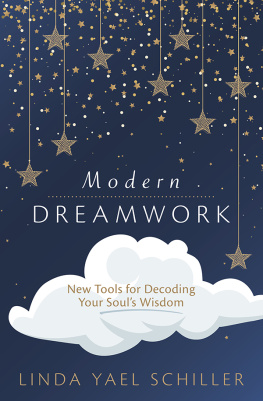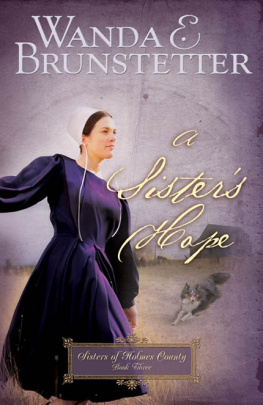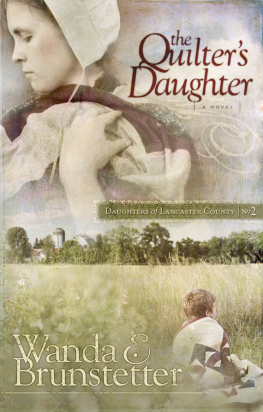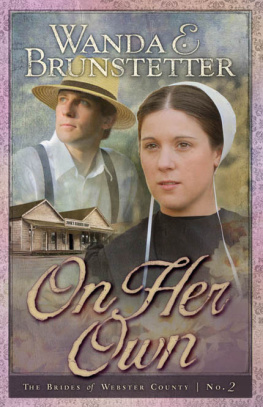S HE W HO
dreams
W ANDA E ASTER B URCH
S HE W HO
dreams
A J OURNEY INTO H EALING THROUGH D REAMWORK
With a Foreword by Robert Moss
N EW W ORLD L IBRARY
N OVATO , C ALIFORNIA
New World Library
14 Pamaron Way
Novato, California 94949
Copyright 2003 by Wanda Easter Burch
All rights reserved. This book may not be reproduced in whole or in part, stored in a retrieval system, or transmitted in any form or by any means electronic, mechanical, or other without written permission from the publisher, except by a reviewer, who may quote brief passages in a review.
Edited by Katharine Farnam Conolly and Carol Venolia
Cover design and typography: Cathey Flickinger
The material in this book is intended for education. It is not meant to take the place of
diagnosis and treatment by a qualified medical practitioner or therapist.
No expressed or implied guarantee as to the effects of the use of the
recommendations can be given nor liability taken.
Library of Congress Cataloging-in-Publication Data
Burch, Wanda Easter
She who dreams: a journey into healing through dreamwork / Wanda Easter Burch.
p. cm.
Includes bibliographical references and index.
ISBN 1-57731-426-3 (alk. paper)
1. Womens dreamsCase studies. 2. Dream interpretationCase studies. 3.
DreamsTherapeutic use. 4. BreastCancerPsychological aspects.
5. Burch, Wanda Easter. 1947 I. Title.
BF1099.W65B87 2003
135.3dc21 2003011375
First printing, October 2003
ISBN 1-57731-426-3
Printed in Canada on acid-free, partially recycled paper
Distributed to the trade by Publishers Group West
10 9 8 7 6 5 4 3 2 1
contents
Chapter 3: Precognitive Dreaming:
The Dance Hall of the Dead
Appendix: Dreaming Our Way to the Heart
of the World by Robert Moss
This book is for three people:
Ron, who shares my dreams;
Evan, who dreams for me; and
Robert, who partners my dreams
d reaming is healing. Our bodies speak to us in dreams, giving us early warning of symptoms we might develop, showing us what they need to stay well. Dreams give us fresh and powerful images for self-healing. Dreams are also the language of the soul; they put us in touch with wells of memory and sources of creativity and energy far beyond the clutter and confusion of the little everyday mind. Beyond this, dreams are experiences of the soul, and can take us sleeping or hyper-awake into realms where we can have direct access to sacred healers and teachers.
These themes and possibilities come vividly alive in Wanda Burchs brave and beautiful book She Who Dreams, which is both the narrative of a personal journey into healing through dreaming and an incitement to bring the gifts of active dreaming into our everyday lives.
I have been sharing dreams with Wanda since early in 1987, and I know the depth of experience and the deeps of dreaming from which this book flows. Her dreams diagnosed a life-threatening illness (breast cancer) a year before the doctors found symptoms. Her dreams guided her choice of treatment, gave her powerful imagery for self-healing and recovery, enabled her to grow a creative relationship with her physicians, and awakened her to a deeper life and a vital engagement with the world as a dreambringer one of those who creates a safe space for others to open to the gifts of dreaming, and can bring a dream to someone in need of a dream.
Her personal story is quite fascinating. Her first dream mentor was her Irish-American grandmother, a wise woman of the Alabama hill country. Later she met the dreamers of the Iroquois, one of whom appeared at her back door in the form of a white wolf.
But it is the story of everyday trials, more than the extraordinary elements in this book, that will touch the hearts of many readers and bring them practical guidance that is urgently needed. Wanda shows how dreams can get us through. One of her most valuable contributions to the literature of healing and recovery is to show us how we can use the self-healing tools that flow from dreamwork to support conventional medical treatments, smoothing the process and reducing adverse side-effects. For this alone, She Who Dreams is an invaluable resource for healthcare professionals, therapists, healers, and caregivers.
a dream friendship
M Y FRIENDSHIP with Wanda began with dreams, and deepened immeasurably through the sharing of dreams. Both only children, we found in each other the sister and brother that each had longed for in childhood. It is quite possible that we were dreaming of each other at that time, decades before we first met in the physical world, in March 1987.
We met in a year when (as they say in West Africa) the ancestors move into the realm of the living when death is close and the veils between the worlds are thin. It was the year my father died, and the year Wanda was called to help her own father prepare for his journey beyond death. It was the year I started dreaming of people who had lived and fought and loved centuries before, on the land where I was living, and it was these ancestral dreams that led me directly to Wanda.
I had recently moved to a farm on the edge of Mohawk country, in upstate New York, to get away from the clutter of big cities. I started dreaming of people who had lived in that neighborhood in an earlier time. In some of these dreams, I met ancient healers and shamans who spoke to me in a language I did not know, which proved to be an archaic form of the Mohawk Indian language. When I had studied enough Mohawk to interpret these dreams, I learned that the Mohawk word for a healer or shaman is atetshents, meaning one who dreams. I discovered that in the traditional practice of the first Peoples of the Northeast dreaming is regarded as central to healing. In Iroquois tradition, it is understood that dreams show us the secret wishes of the soul and it is believed that it is the duty of a caring community to gather round a dreamer, help her recognize the souls wishes, and take action to honor them.
One of the people I met in my dreams was an imposing white man who sometimes appeared dressed like a colonial gentleman or a British general, at other times like a Mohawk Indian. Through a chance discovery in a used bookstore, I was able to identify my dream character. His name was Sir William Johnson, and he lived among the Mohawk as Kings Superintendent of Indians in the time of the French and Indian Wars. I had never heard of Johnson before I started dreaming his world so vividly that I eventually wrote novels about him. My dreams spurred me to intensive research, and soon to visit Johnson Hall, Sir Williams last home in the Mohawk Valley, where I first met Wanda. She was a gentle, soft-spoken Southerner who had been curator of this historic site for many years, and she knew Johnson and the Iroquois Indians very well.















